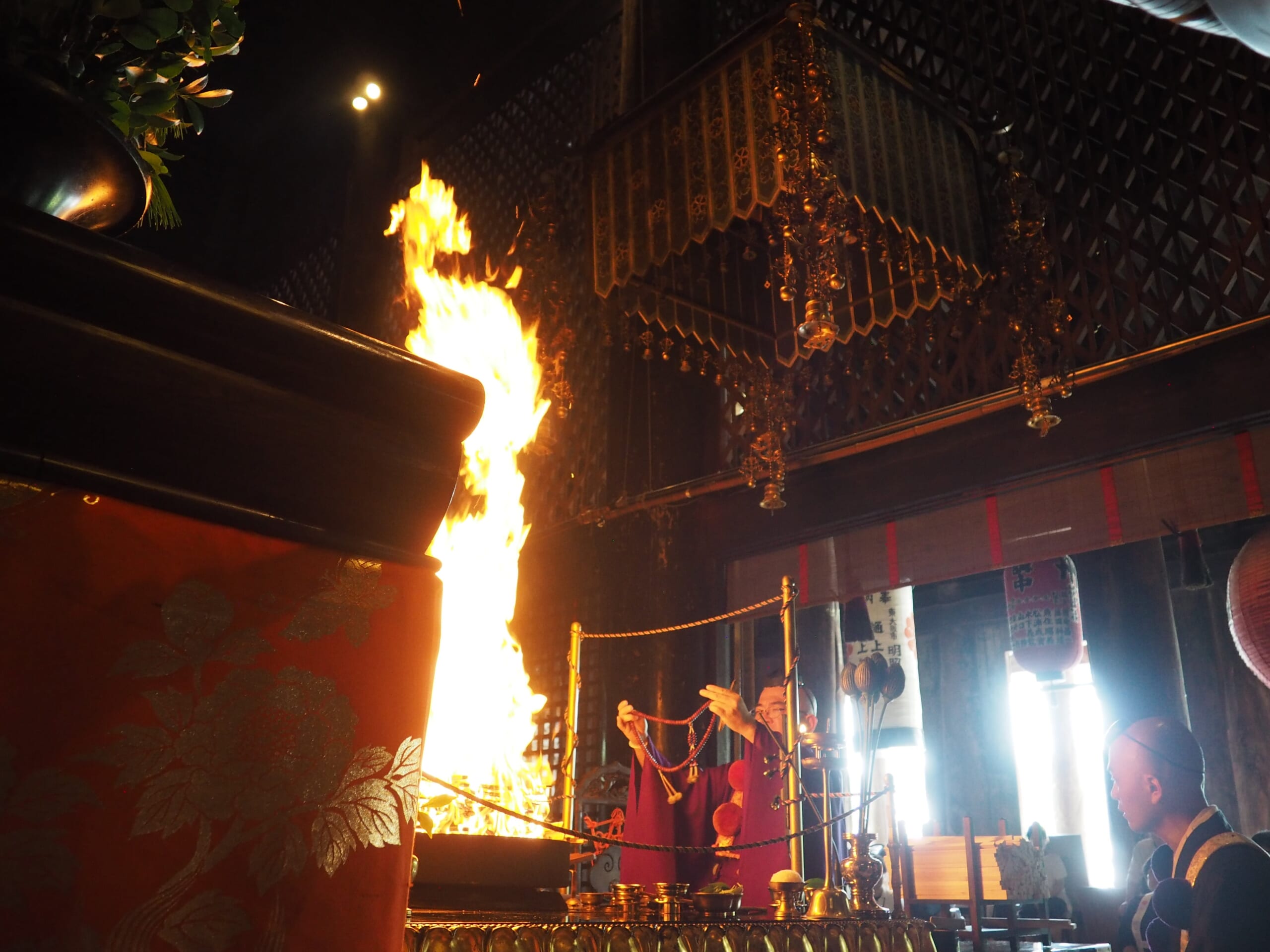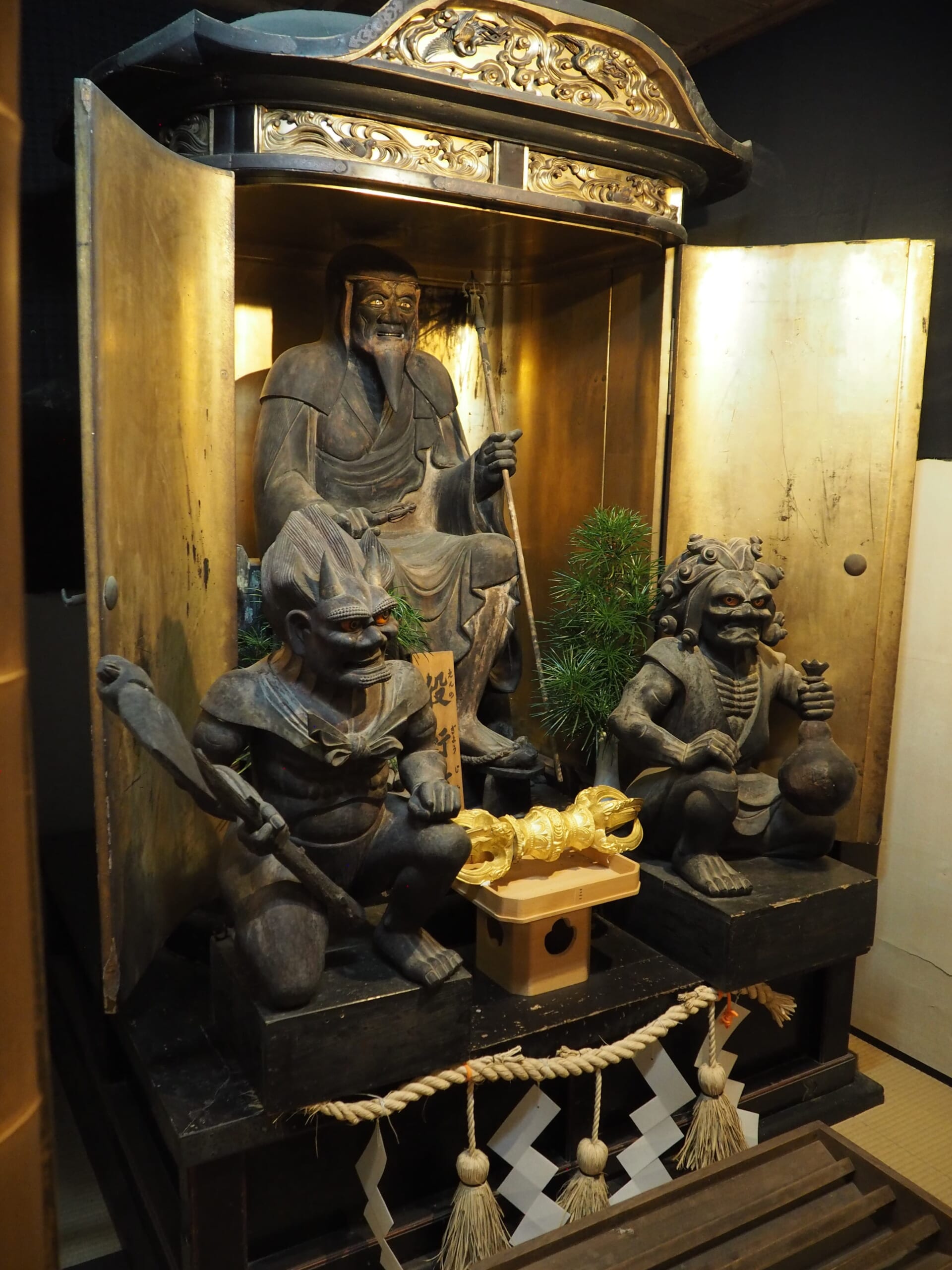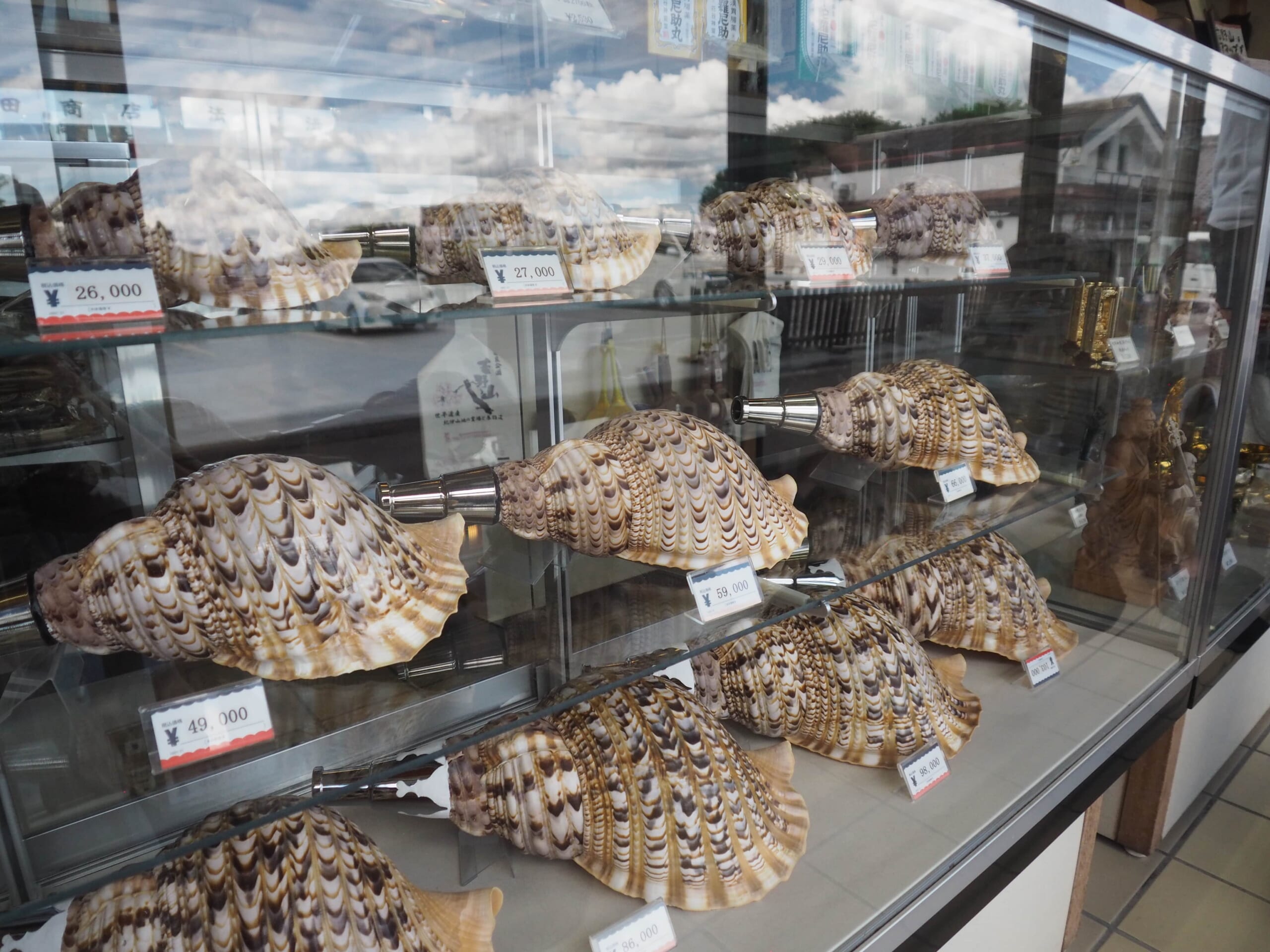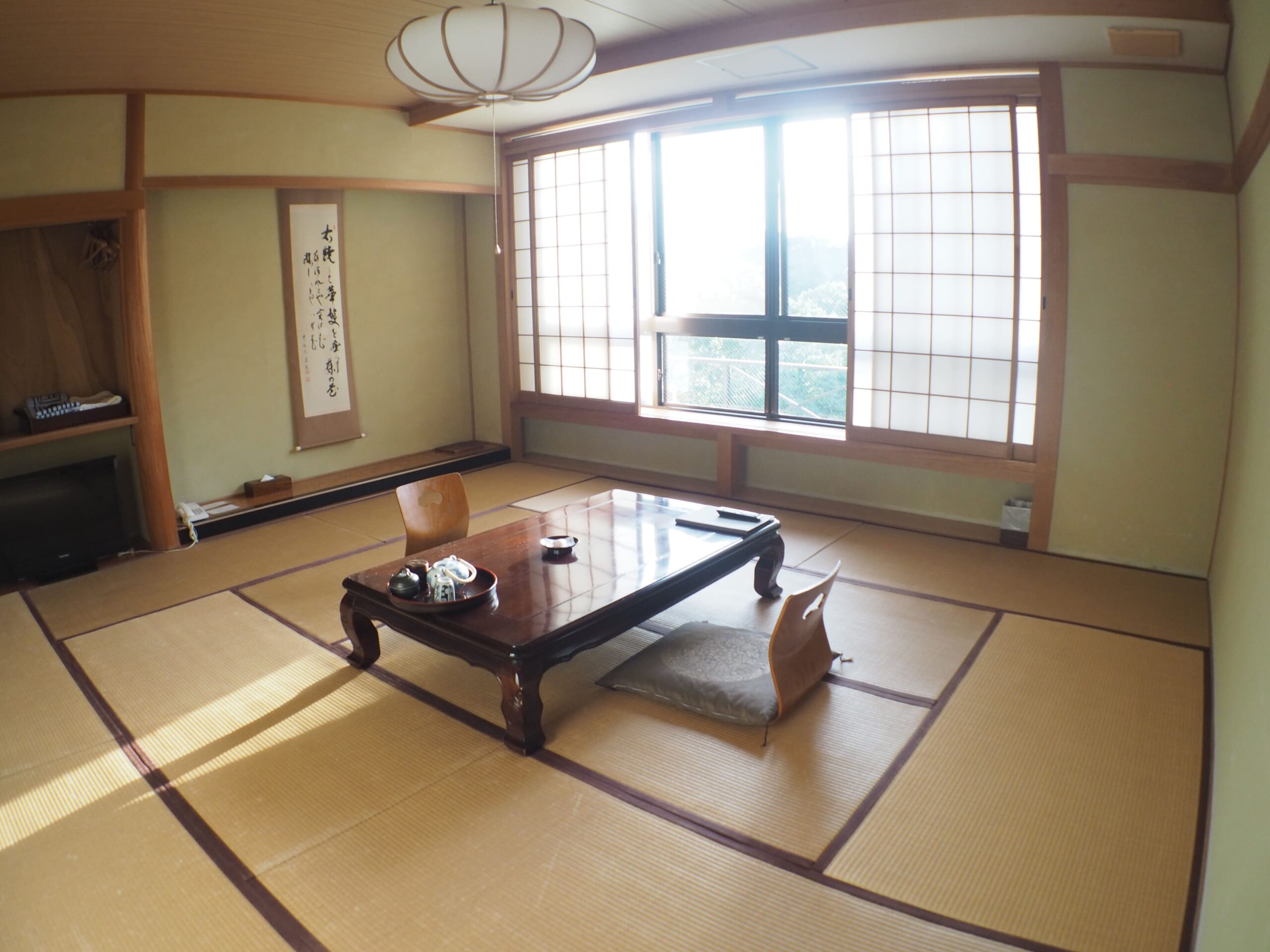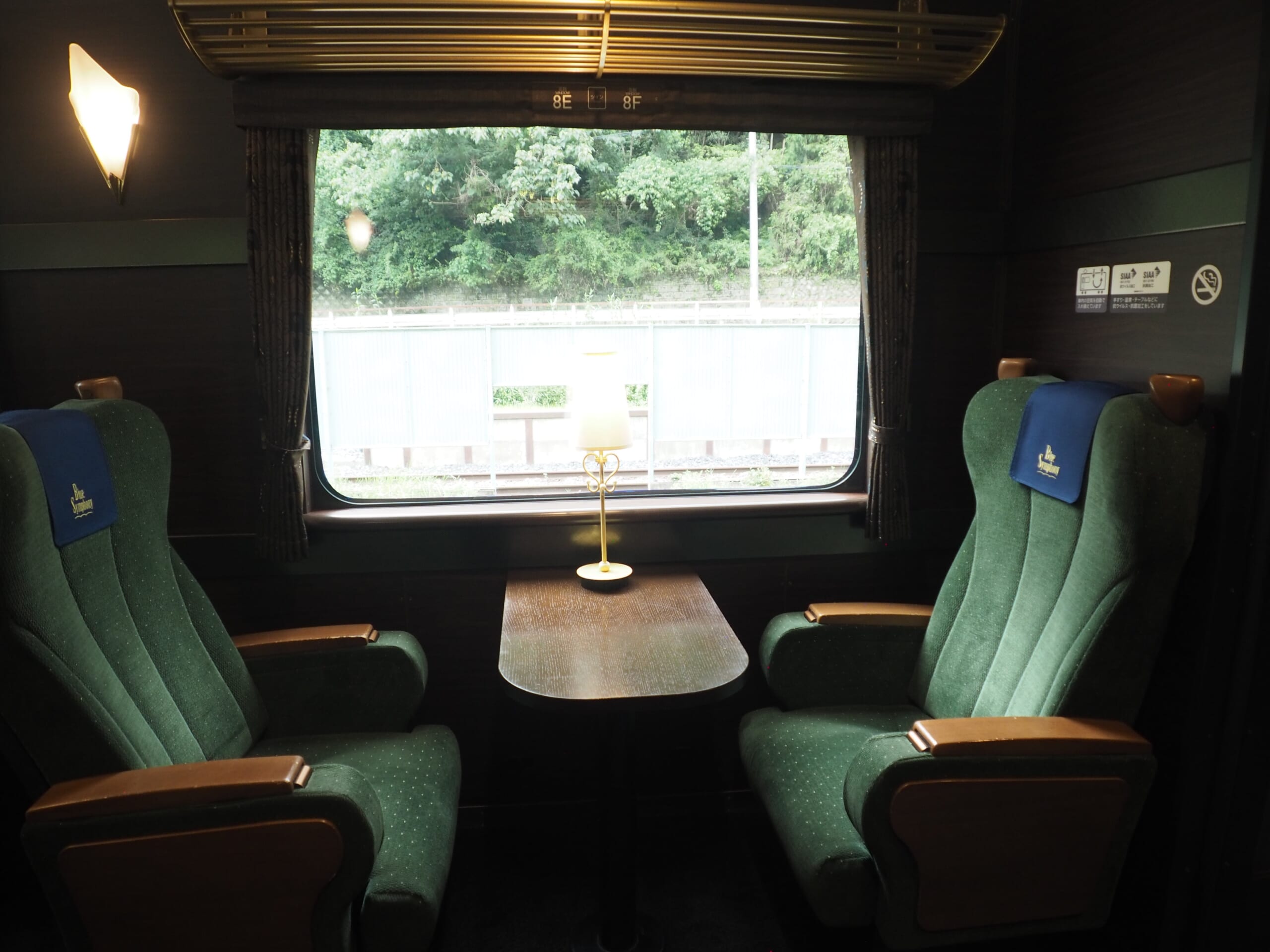Exploring Yoshino: Where Spirituality and Nature Converge in Japan
Marking 20 Years of UNESCO Recognition: Discover the Spiritual Depths of Yoshino and Kinpusenji

When most people think of Yoshino town in Nara Prefecture, cherry blossoms immediately come to mind, as it is one of Japan’s most famous spots for sakura viewing.
However, Yoshino offers much more than seasonal beauty. This article delves into the year-round allure of Yoshino, where the town’s culture is deeply intertwined with the ancient practices of Shugendo and the revered Kinpusenji Temple. The rich history of these spiritual traditions even explains the abundance of cherry trees.
In 2024, Yoshino celebrates 20 years as a UNESCO World Heritage site, highlighting its enduring cultural and spiritual significance. I recently visited Yoshino, and I will share my experience in this article. Hopefully, it will spark an interest in you.
*Please note that this article contains affiliate links.
What is Yoshino Town?
Yoshino town (吉野町), located in the northern part of Yoshino District in central Nara Prefecture, is renowned for its breathtaking cherry blossoms on the mountains of Yoshino, drawing visitors from across the nation. The Yoshino River flows through the town from east to west, and parts of the town are designated as Yoshino-Kumano National Park and Yoshino River-Tsuburo Prefectural Natural Park.
Less known, but more importantly, Yoshino Town has its roots in Shugendo (a unique Japanese religion) and Kinpusenji Temple. In fact, the reason there are many Sakura trees in Yoshino is the deity of Shugendo, Zao Gongen.
With its rich cultural heritage and natural beauty, Yoshino offers a unique glimpse into Japan’s past and present.
My Experience at Yoshino Town
I had the opportunity to enjoy Yoshino town for two days. Here are some of the most attractive spots I saw and experienced.
Temples & Shrines
Kinpusenji Temple

Kinpusenji Temple (金峯山寺) is a revered UNESCO World Heritage site and a central hub for Shugendo, a unique Japanese religion combining ancient mountain worship and Buddhism. Founded by En no Gyoja, who carved the image of the deity Zao Gongen from a mountain cherry tree after intense training, the temple houses three statues of the deity in its main hall, Zaodo. These statues, with their fierce expressions, symbolize protection and spiritual power.
For over 1,300 years, Kinpusenji has served as a vital training ground for Shugendo practitioners, maintaining a deep connection between people, nature, and the divine.
Accessible by a 10-minute walk from Yoshinoyama Ropeway Station, Kinpusenji has been a significant site for mountain ascetic practices since the mid-Heian era.

When we visited Kinpusenji, we were fortunate to get to talk with Rev. Ryochi Gojo, who is the current head of Kinpusenji Temple.
What is Shugendo?
Shugendo (修験道), a unique Japanese religion, blends ancient mountain worship with Buddhist practices, emphasizing spiritual growth through rigorous training in nature. Practitioners enter sacred mountains, seen as mandalas, to connect with the divine and seek purification. Unlike Buddhist traditions, Shugendo allows followers to maintain their families and jobs, bringing the spiritual power they gain back to their communities to enhance collective well-being. This inclusive approach, where ordinary people strive to become Buddhas and live harmoniously with nature, is central to Japanese Shugendo.
Shugendo teaches reverence for nature and compassion for all living things, values that are increasingly forgotten in modern life. It encourages practices like conserving water and reducing waste, reminding us that humans are sustained by nature, not merely coexisting with it. The tradition’s focus on community, spiritual growth, and environmental stewardship is reflected in the ongoing maintenance of Yoshino’s famous cherry trees. These trees, planted as offerings to Zao Gongen, symbolize prayers for health, prosperity, and peace.
Visitors to Kinpusenji can experience this profound spiritual heritage, connecting with the temple’s ancient practices and the natural beauty surrounding it. By engaging with the temple’s rituals and appreciating its landscape, visitors can tap into the enduring spiritual traditions that continue to shape this remarkable site.
About the Shugendo Training
There are a certain number of visitors who come to Yoshino, interested in the Shugendo training.
The Omine Okugake-michi (大峯奥駈道) is a sacred pilgrimage route in Shugendo that traverses Mount Omine, connecting Yoshino and Kumano. This ancient path, spanning approximately 80 kilometers, is known for the rigorous “Okugake” training, where practitioners cross steep peaks ranging from 1,000 to 1,900 meters in elevation.
This training is a demanding and spiritual journey through the rugged terrain of Japan’s sacred mountains. Participants face both gentle paths and challenging rocky slopes, but the true essence of the training lies in pausing to chant sutras, offer prayers, and show deep reverence for the divine.
This practice is not without risk; one wrong step can lead to danger, similar to mountain climbing. The key to successful training is listening carefully to the guidance of experienced leaders, embracing the spiritual presence in nature, and walking with gratitude and humility.
In other words, if you’re planning on experiencing this training, be sure to prepare yourself before coming to Yoshino.
Gomagyo at the Zaodo

Gomagyo (護摩行) is a sacred ritual with roots in ancient India, practiced at Zaodo to purify and connect with the divine. The ceremony centers around the concept of purification through fire, one of the key methods in Japanese spiritual practices, alongside purification with water.
By burning offerings like grains and leaves, we symbolically cleanse our six senses and present these offerings to the gods and Buddhas. The ritual serves not only to pray for world peace and personal well-being but also to honor the divine.
As we make these offerings, we are not just humans worshipping Fudomyo; through this ritual, we momentarily become the deity, merging our human and divine selves in a mighty spiritual enactment. This act transforms the practitioner into the deity, creating a profound connection between the earthly and the sacred.
Praying Sessions
At the Zaodo, monks conduct daily morning, noon, and evening prayers, and visitors are welcome to participate.
Immerse yourself in this unique spiritual atmosphere and experience a moment of prayer unlike any other. Morning prayers begin at 6:30 AM, noon prayers begin at midday, and evening prayers start at 4:30 PM, each lasting approximately 40 minutes.
It’s a chance to step away from the ordinary and connect with a profound tradition.
Sakuramotobo Temple

Sakuramotobo Temple (櫻本坊) is a captivating blend of ancient tradition and modern thought. The temple upholds a deep spiritual heritage while embracing new ideas and fostering a spirit of gratitude and respect.
This temple offers a serene environment where visitors can connect with the profound order of the universe and the unique value of each soul. Sakuramotobo is also known for its “Yumemi no Sakura,” a cherry tree with a legendary connection to Emperor Tenmu, symbolizing the temple’s auspicious beginnings.

We also had the pleasure of talking with Tatsumi san (Head Priest) and Saile san (Acting Head, Office of Doctrine and Education). They expanded on what Rev. Gojo explained to us.
The connection between Shugendo and Yoshino
Shugendo, the ancient spiritual practice rooted in mountain worship, finds its heart in the sacred mountains of Yoshino, where nature and spirituality merge. From May to September, the mountains open for pilgrimage and training, while in winter, they close, symbolizing a period of rest. This region, from Kumano Hongu to Yoshino, has been a hub of Shugendo for over 1,350 years. Here, practitioners engage in various forms of ascetic practices, such as meditation, waterfall purification, sutra chanting, and calligraphy, all aimed at purifying the six senses and reconnecting with their spiritual essence.
Yoshino’s temples, including Sakuramotobo, were established as training grounds for Shugendo by Emperor Tenmu. These temples are deeply connected to the natural environment, embodying the concept of harmony between humans, nature, and the divine. The entire Yoshino mountain range, with its famous cherry blossoms, offers a journey from the lower to the upper peaks, each with its historical and spiritual significance. Shugendo, which blends Shinto and Buddhist beliefs, encourages a holistic view of life, where humans, nature, and the cosmos are interconnected. Visitors to Yoshino are invited to explore these sacred paths, reflect on their place in the universe, and appreciate the profound connection between nature and spirituality that has defined this region for centuries.
Yoshimizu Jinja Shrine

Yoshimizu Jinja Shrine (吉水神社) is a fascinating site with deep historical and cultural significance.
Recognized as a UNESCO World Heritage site, the shrine’s buildings are designated as Important Cultural Properties. Originally a temple called “Yoshimizu-in,” it became a shrine following the Meiji-era decree separating Shinto and Buddhism. The shrine boasts Japan’s oldest shoin-style architecture, showcasing unique early examples that influenced modern Japanese residential design.

Yoshimizu Jinja Shrine is historically notable as the hiding place of Minamoto no Yoshitsune and Shizuka Gozen in 1185, and later as the temporary palace of Emperor Go-Daigo during the Nanboku-chō period. It also hosted Toyotomi Hideyoshi and his 5,000 followers for a grand cherry blossom viewing in 1594.
The shrine displays numerous cultural treasures and is associated with Shugendo practices, offering a glimpse into ancient spiritual rituals. Visitors should follow the traditional Shinto practice of two bows, seventeen claps, and one bow when paying respects.
Mikumari Jinja Shrine

Mikumari Jinja Shrine (水分神社) is a UNESCO World Heritage site dedicated to the god of childbirth and children’s protection.
Built in the Azuchi-Momoyama era, the shrine was reconstructed in 1604 by Toyotomi Hideyori, son of Toyotomi Hideyoshi, who prayed here for a child.
The shrine features unique architecture and a 400-year-old mikoshi (portable shrine). It hosts a rice festival with farmer and ox performances and is a pilgrimage site for Yamabushi monks. A large Shidare zakura (weeping cherry tree) graces its center.
The shrine buildings are designated as Important Cultural Properties, showcasing beautiful Momoyama-style architecture.
Kinpu Jinja Shrine & Yoshitsune’s Tower Hideout

Kinpu Jinja Shrine (金峯神社) stands quietly in the Oku Senbon area. It enshrines Kanayamahiko-no-Kami, the guardian deity of Mount Kinpu, revered for preventing decay and overseeing gold mines. Known as a Shugendo training site since medieval times, its worship hall was relocated from the former Yoshino Jingu Shrine.
Nearby, Yoshitsune’s Tower Hideout (義経隠れ塔) remains, where the legendary Minamoto no Yoshitsune evaded capture by breaking through the roof, earning it the name “Escape Tower.” Surrounded by ancient cedar and cherry trees, the shrine and tower offer a glimpse into Japan’s rich spiritual and historical heritage.
Restaurants
Yakko

Yakko (やっこ), a renowned restaurant established in the Taisho era, is located just south of Kinpusenji Temple. It specializes in Kakinoha-zushi, a traditional Yoshino dish of salted mackerel on sushi rice, wrapped in persimmon leaves for preservation.

Using high-quality mackerel from nearby waters, Yakko meticulously follows its original recipe to create this delicacy. Diners can enjoy their meal with stunning views, especially during cherry blossom season.
Yakko also offers set menus with soba or udon and seasonal specialties. It is a 10-minute walk from Yoshinoyama Ropeway Station.
Hayashi Tofu and Cafe

Hayashi Tofu and Cafe (豆富茶屋林) offers a delightful experience centered around tofu. This restaurant features a variety of tofu-based dishes and sweets, including set menus and noodle dishes like tofu ramen. Visitors can enjoy freshly made tofu and fried tofu, crafted with care at the Hayashi Tofu factory.
The café also has a gift shop selling unique items like tofu donuts, tofu okara, and tofu pork buns. Committed to quality, they use domestic soybeans, pristine water, and traditional methods. Enjoy the fresh taste of their handmade tofu while taking in the beauty of Yoshino.
Gift Shops
Kurumada Gifts

Kurumada Gifts (車田商店) specializes in ritual implements and attire for Shugendo practitioners. The shop offers a wide range of high-quality garments, tools, and accessories essential for rigorous spiritual training.
Positioned just a 10-minute walk from the Yoshinoyama Ropeway, Kurumada Gifts is renowned for its comprehensive selection and nationwide shipping. Notably, the shop supplies conch shells used in the goma fire ritual at Kinpusenji Temple.
If you’re considering Shugendo practice, Kurumada Gifts has everything you need to begin your journey.
Inns (Hotels)
Yoshino offers a variety of cozy inns that cater to different needs, providing personalized hospitality.
Unlike large city hotels, these intimate inns focus on local cuisine, featuring fresh, seasonal ingredients. Staying at a Yoshino inn allows you to experience the region’s traditions, visit temples, and enjoy the natural beauty, all while being rejuvenated by the serene atmosphere.
Young entrepreneurs have revitalized the area in recent years, ensuring a welcoming experience for all visitors who come to taste delicious food, connect with nature, and leave feeling refreshed.
Chikurin-in Gumpoen

Chikurin-in Gumpoen (竹林院群芳園) spans an impressive 10,000 tsubo (approximately 33,000 square meters). Known for its gardens, which are among the three great gardens of Yamato, this inn offers a blend of history and elegance.
The lobby displays artifacts linked to Toyotomi Hideyoshi, including a “tea bento” and a screen painted by Kano Motonobu. Historically a lodging for Shugendo practitioners, it also has connections to notable historical figures. The main building, a late Edo period structure, showcases rustic wooden architecture.
Accommodations range from standard rooms to those with open-air baths, suitable for families and groups.
I had the pleasure of staying at the Chikurin-in Gumpoen, and everything was so delightful. The large garden is really well maintained and pleasant to walk around. And both dinner and breakfast consisted of a wide variety of colorful and delicious dishes.
The hotel has a special room that was once used by the emperor. The Matsu no Ma (松の間) is not only spacious but has a uninterrupted breathtaking view of the mountains.
Yukawaya

Yukawaya (湯川屋) offers a unique stay with its 15 rooms, making it one of the larger inns in the area. The entrance is on the fourth floor, a distinctive Yoshino Date design.
Among its accommodations are two new rooms, “407 Yamazakura” and “408 Kinmokusei,” both featuring open-air baths—one in a traditional Japanese style and the other with Western beds.
Guests can enjoy stunning views from the specially designed open-air baths, one themed with wood and the other with stone.
The inn emphasizes local cuisine and offers breathtaking views of the stars, morning mist, and seasonal foliage. A short five-minute walk takes guests to Kinpusenji Temple for morning prayers, a popular activity among visitors.
Observatory Spots
Hanayagura observation point

The Hanayagura Observation Point (花矢倉展望台) offers breathtaking views of the iconic Yoshino landscape. At the heart of this scene is Kinpusenji Temple, surrounded by the town and encircled by cherry blossoms.
Visitors can experience the beauty of each season: vibrant green in early summer, deep green in mid-summer, stunning red foliage in autumn, and snowy white in winter. On clear days, you can see as far as Osaka. After rain, a mystical sea of clouds often forms, adding to the spiritual ambiance.
This viewpoint highlights the harmony between the town and its natural surroundings, reflecting the Shugendo philosophy of respecting the mountain’s shape.
Hitome Senbon

Located within the grounds of Yoshimizu Shrine, Hitome Senbon (一目千本) offers a breathtaking view of thousands of cherry blossoms in a single glance. This stunning panorama of Naka Senbon and Kami Senbon cherry trees is so enchanting that it is said to add ten years to your life just by seeing it.
Toyotomi Hideyoshi once used this spot as his base for a grand cherry blossom viewing party. The beautiful sight, combined with the historical significance, makes Hitome Senbon a must-visit spot in Yoshino.
Tours
Cycling tour
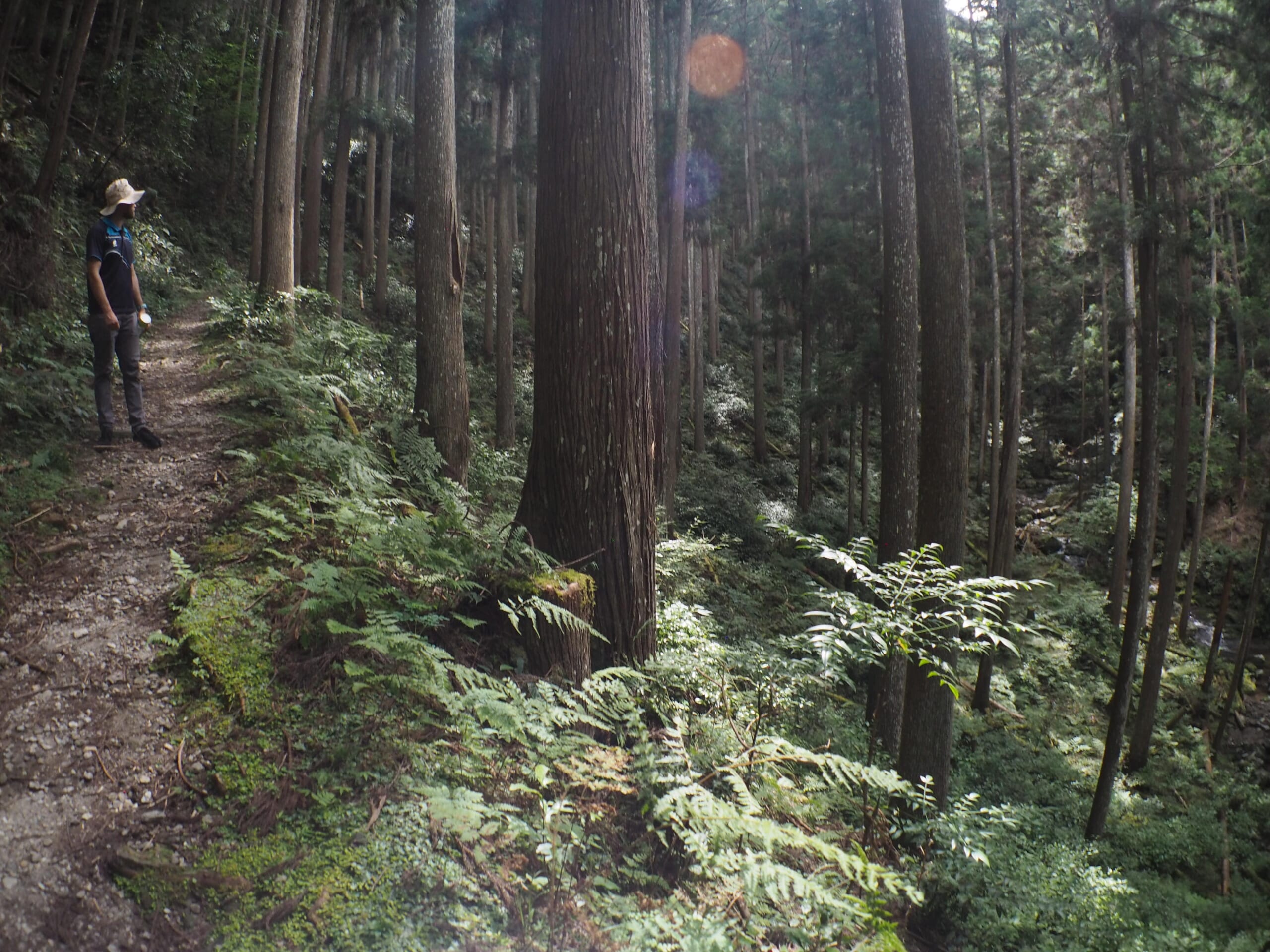
Cycling tours in Yoshino, Nara Prefecture, offer a unique way to explore this scenic mountain town. Various routes, including the lake route and Kisadani route, combine cycling and hiking.
Private Guided Half-Day Walking Tour in Yoshinoyama: Explore the UNESCO World Heritage site of Yoshinoyama on a personalized half-day tour with a knowledgeable local guide. Discover the area’s rich Shugendo history and stunning natural beauty at your own pace, whether on foot from Yoshino Station or with convenient bus or ropeway transport.
Customize the itinerary, including highlights like Hanayagura, to suit your preferences, and enjoy time to explore further or move on to your next destination after the guided tour.
<<Private Guided Half-Day Walking Tour in Yoshinoyama>>
*Note: You can also simply rent a bicycle at Yamato-Kamiichi Station (大和上市駅).
Access
Arriving at Yoshino

Reaching Yoshino by the Kintetsu train is convenient and offers scenic journeys.
From Kyoto, take the Kintetsu Limited Express, transferring at Kashihara Jingu-mae, for a total travel time of about 1 hour and 50 minutes. From Osaka, you can travel directly from Osaka Abenobashi on the Kintetsu Limited Express in approximately 1 hour and 15 minutes. From Nagoya, the trip takes around 2 hours and 55 minutes with a transfer at either Yamato-Yagi and Kashihara Jingu-mae.
Additionally, you can enjoy the Blue Symphony, a tourist limited express connecting Yoshino Station and Osaka Abenobashi Station.
Once you arrive to Yoshino Station, you can either walk towards Yoshino town, or you can simply take the ropeway which is just a couple of minutes walking from Yoshino Station.
Travel to Yoshino using Kintetsu Blue Symphony
The Kintetsu Blue Symphony (青の交響曲) is a scenic and luxurious train connecting Yoshino Station and Osaka Abenobashi Station (in about an hour and 15 minutes). This train offers a refined travel experience with table seating where you can enjoy meals from the onboard shop or your own food, making it ideal for families and groups.

Designed for an adult journey that embraces the seasonal landscapes and rich history of the Asuka and Yoshino regions, the Blue Symphony features a deep navy exterior with gold accents. The interior design uses calm color schemes and wood grain patterns inspired by European hotels, creating an elegant atmosphere.
Passengers can indulge in local specialties, such as Yoshino’s Sake Flight and the delectable tofu from Hayashi Tofu (林豆腐店). The train also sells exclusive railway merchandise, including keychains and handkerchiefs. With its harmonious blend of history, nature, and gourmet delights, the Blue Symphony promises a memorable journey through the heart of Japan.

I ordered the “Yoshino local sake tasting 3-cup set” and the “Goma-dofu (sesame bean curd)”.
If you feel like traveling to Yoshino (or from Yoshino) in a luxurious fashion, this is a great opportunity to do so!
20th Anniversary of Registration of Yoshino-Omine as a World Heritage site
In 2024, Yoshino is celebrating the 20th anniversary of its designation as a UNESCO World Heritage site with a year-long series of special events.
Among the highlights is the Yoshino Gongen Noh performance at Kinpusenji Zaodo, where living national treasures will perform the profound Noh play “Taniko” before the rare exhibition of Japan’s largest hidden Buddha statues. From October to December, visitors can also experience the Special Exhibition of the Principal Buddha and exclusive Nighttime Visits to Kinpusenji Zaodo, immersing themselves in the temple’s serene atmosphere. The YOSHINO 20 ART FESTIVAL invites visitors to explore Yoshino’s historic streets through art, while Human Energy Alive: Resonating in Yoshino brings live music events that celebrate the connection between nature and humanity.
These events, among others, offer a unique opportunity to experience the rich cultural and spiritual heritage of Yoshino during this milestone year.
For more information about these events, check out the following link.
<<YOSHINO20 Official Website>>
My Thoughts
As I mentioned at the beginning of this article, Yamazakura is vastly popular during the cherry blossom season. However, as you can see in this article, Yoshino has so much more to offer! And international visitors are starting to realize this.
Visiting Yoshino isn’t just about enjoying nature in a town in the mountains. It is a unique opportunity to immerse yourself in one of the most Japanese ways of thinking. What better place to do this than at the headquarters of Shugendo?
As I mentioned, October is full of activities in Yoshino. It also happens to be when Autumn foliage starts to bring colors to the mountains, painting a much different, but equally as beautiful as it is during springtime.
▽Subscribe to our free news magazine!▽
For more information about Yoshino’s surrounding area, check out the following articles!
▽Related Articles▽
▼Editor’s Picks▼
Written by
Born and raised in Costa Rica, I started living in Tokyo from college. I love traveling within Japan & around the world. Since I wasn’t born in Japan, I know the cultural impact that you can get when visiting Japan for the first time and what you might be worried about before your trip. And I’ve lived long enough to somewhat understand the nuances of the Japanese culture that make this country such an attractive place to visit. Hopefully I can provide to you both the information you’re looking for and the information you didn’t know you needed to know.





